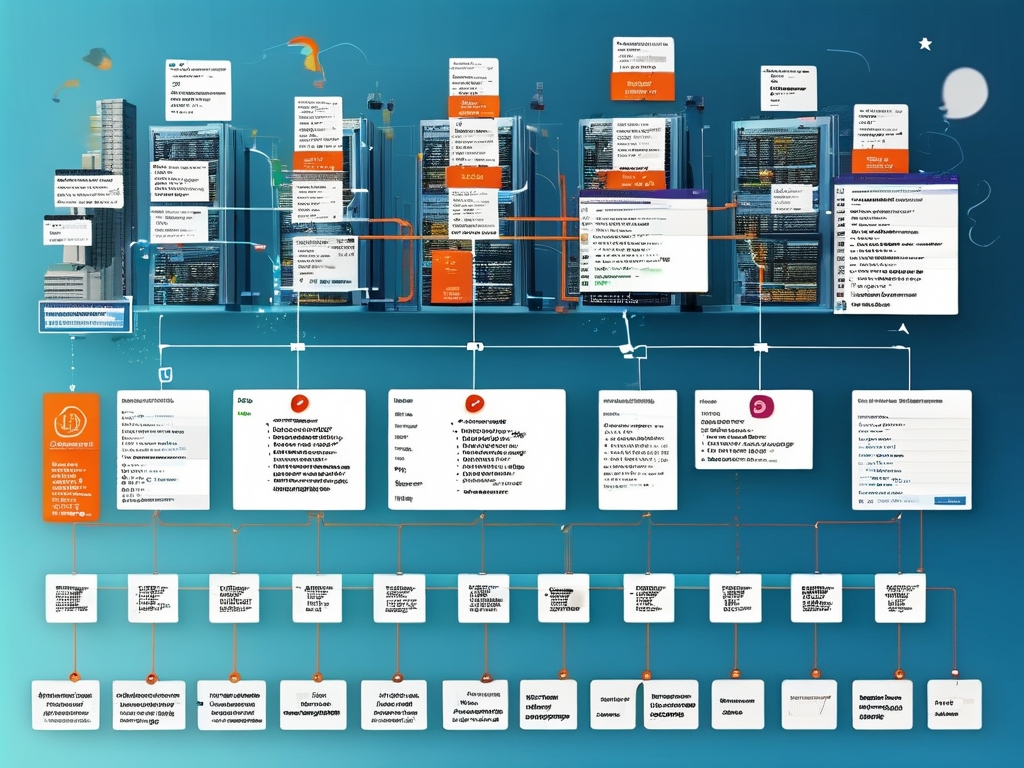Automated deployment has become a cornerstone of modern software development, enabling teams to deliver updates faster while reducing human error. To build an effective automated deployment pipeline, several key technologies must work in harmony. This article explores the critical components required to implement robust deployment automation and their roles in streamlining software delivery.
1. Continuous Integration/Continuous Deployment (CI/CD) Platforms
CI/CD tools like Jenkins, GitLab CI/CD, and CircleCI form the backbone of automation workflows. These platforms enable automatic code integration, testing, and deployment through predefined pipelines. For instance, a Jenkins pipeline script might include stages for code compilation, unit testing, and container image deployment:
pipeline {
agent any
stages {
stage('Build') {
steps {
sh 'mvn clean package'
}
}
stage('Test') {
steps {
sh 'mvn test'
}
}
stage('Deploy') {
steps {
sh 'kubectl apply -f deployment.yaml'
}
}
}
}
2. Infrastructure as Code (IaC) Solutions
Tools such as Terraform and AWS CloudFormation allow developers to define infrastructure using declarative configuration files. This approach ensures consistent environment setups across development, staging, and production. A Terraform script for provisioning cloud resources might specify virtual machines, networking rules, and storage buckets in reusable modules.
3. Containerization Technologies
Docker and container orchestration systems like Kubernetes have revolutionized deployment consistency. Containers encapsulate applications and dependencies, eliminating the "it works on my machine" problem. Kubernetes further automates scaling and rollouts through declarative manifests:
apiVersion: apps/v1
kind: Deployment
metadata:
name: web-app
spec:
replicas: 3
template:
spec:
containers:
- name: app
image: my-registry/web-app:v1.2
4. Configuration Management Tools
Ansible, Chef, and Puppet automate server configuration and application deployment. These tools enforce desired system states across multiple servers, ensuring all environments remain synchronized. Ansible playbooks, for example, can automate software installation and service configuration through YAML-based tasks.

5. Version Control Systems
Git repositories (GitHub, GitLab, Bitbucket) serve as the single source of truth for code and deployment scripts. Integration with CI/CD tools triggers automated pipelines whenever changes merge into specific branches, creating a seamless workflow from commit to production.
6. Monitoring and Logging Systems
Automation extends beyond deployment to operational visibility. Tools like Prometheus for metrics collection and ELK Stack (Elasticsearch, Logstash, Kibana) for log analysis enable automated alerting and performance optimization. Teams can configure thresholds that trigger rollbacks or scaling events without manual intervention.
7. Cloud-Native Services
Major cloud providers offer managed services that simplify automation. AWS CodeDeploy, Azure DevOps, and Google Cloud Build provide native integration with other cloud resources, while serverless platforms like AWS Lambda enable event-driven deployment workflows.
8. Security Automation Tools
Incorporating security scanning tools like SonarQube for code analysis and Trivy for container vulnerability checks into the pipeline ensures automated compliance checks. These tools can block deployments until critical issues get resolved, embedding security into the deployment process.
Implementation Considerations
Successful automation requires careful planning. Teams should:
- Standardize environment configurations across development stages
- Implement gradual rollout strategies (canary deployments)
- Establish rollback mechanisms for failed updates
- Monitor pipeline performance metrics for optimization
As organizations adopt microservices architectures and cloud-native development, the complexity of deployment processes increases exponentially. A well-designed automation stack not only accelerates delivery but also improves system reliability. By combining the right mix of CI/CD platforms, infrastructure automation, and monitoring tools, teams can achieve deployment frequencies measured in hours rather than weeks while maintaining production stability.
The evolution of deployment automation continues with emerging trends like GitOps, where infrastructure changes synchronize automatically with repository updates, and AI-driven deployment optimization. These advancements promise to further reduce manual intervention while enhancing deployment intelligence.










